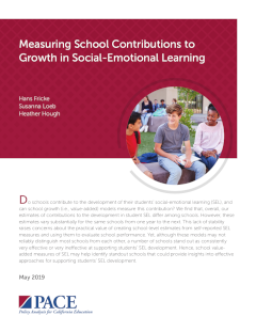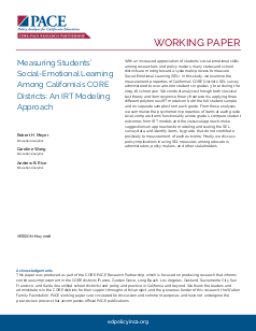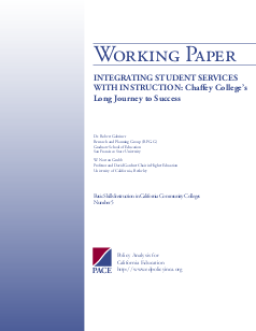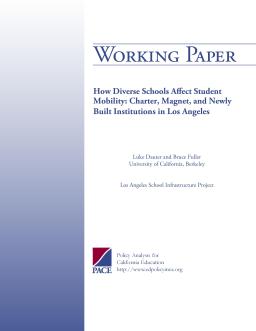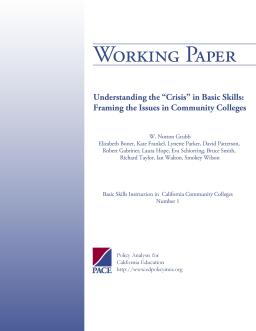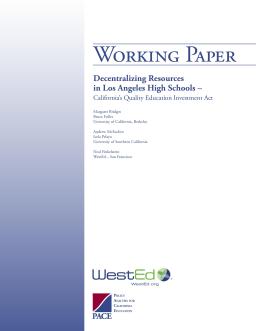Published
Summary
This report examines the stability of school effects on social-emotional learning (SEL) over two years in California's CORE districts. The correlations among school effects in the same grades across different years are positive but lower than those for math and ELA. While these effects measure real contributions to SEL, their low stability draws into question whether including them in school performance frameworks and systems would be beneficial.
An IRT Modeling Approach
Published
Summary
This study examines the properties of California's CORE Districts' SEL survey, which measures social-emotional learning in students. The survey was given to over 400,000 students in grades 3-12. The study uses both classical test theory and item response theory frameworks to analyze the data and make recommendations for modeling and scaling SEL survey data. Policy implications are discussed for educators, administrators, policy makers, and other stakeholders.
Chaffey College’s Long Journey to Success
Published
Summary
Chaffey College in California's Inland Empire is renowned for its "risk tolerant change-oriented culture" and impressive student support programs, which have led to exceptional outcomes for Chaffey students. In this working paper, researchers visited Chaffey and other California colleges to examine the quality of instruction in basic skills and the integration of student support services. Chaffey's success story highlights the importance of developing a broad structure necessary for success both in developmental education and for all students.
Charter, Magnet, and Newly Built Campuses in Los Angeles
Published
Summary
This paper examines the impact of pupil mobility in urban districts like Los Angeles, where families are encouraged to switch schools due to the growth of mixed-markets of charter, magnet, and pilot schools. African American and White students are more likely to exit their schools, while overcrowding in low-income Latino neighborhoods leads to higher exit rates. Charter and magnet school students exit less. The district's commitment to relieve overcrowding leads to Latino students moving to newly built schools. The opening of new high schools reduced pupil mobility.
Framing the Issues in Community Colleges
Published
Summary
This paper series addresses the issue of basic skills instruction in California Community Colleges. The problem is twofold: a high proportion of students enter college needing developmental courses, and these students are unlikely to move into college-level work. The research focuses on instructional issues, with observations and interviews to understand classroom and institutional settings. The subsequent papers in the series will cover various hypotheses for why success rates in basic skill instruction are not higher.
California’s Quality Education Investment Act
Published
Summary
This working paper examines the use of Quality Education Investment Act (QEIA) funds, which allocated $2.6B over seven years to California's lowest-performing schools. The authors conducted a study of four Los Angeles high schools to investigate how QEIA dollars were spent in the first year, who made the decisions, and how funds were used to improve teaching and the instructional program. The study found that district officials and principals had discretion in allocating funds, consistent with recent efforts to deregulate categorical-aid programs and give local educators fiscal discretion.
